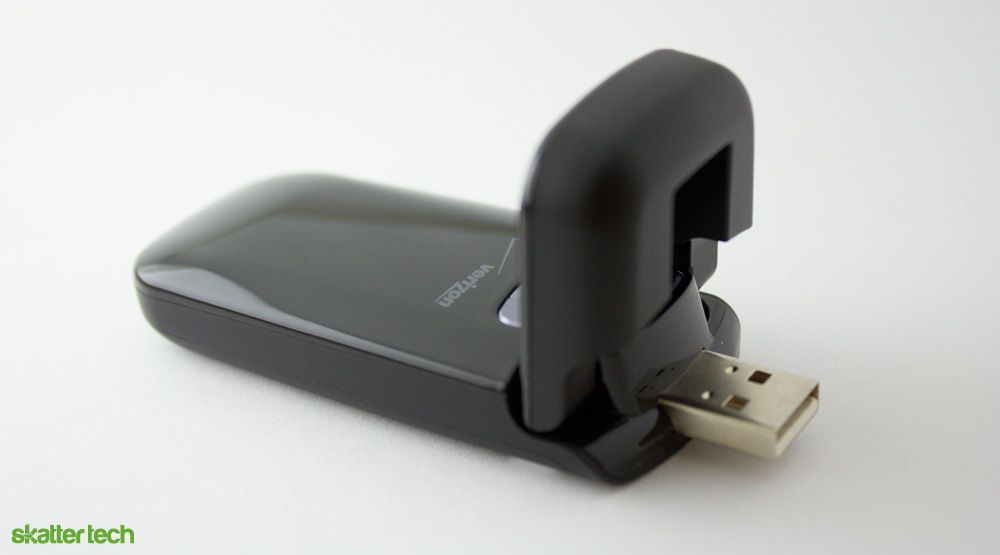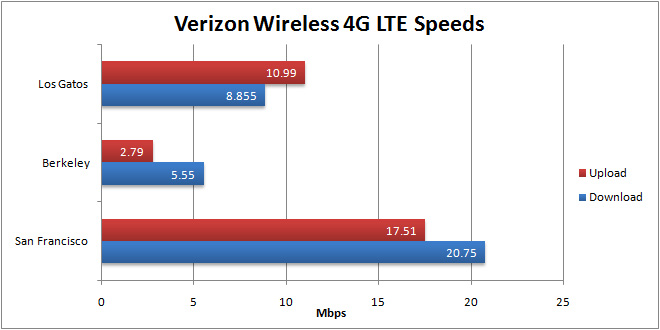Verizon Wireless – LG 4G LTE USB Modem (Review)

In December 2010, Verizon Wireless launched their next generation 4G LTE network in 38 major cities across the country including 60 airports. While coverage is somewhat limited compared to Sprint’s WiMax 4G network, Verizon Wireless announced plans to expand into an additional 140 markets by the end of this year. There were a total of ten 4G devices including smart phones, tablets, and portable hotspots announced at CES 2011, but none are available just yet. I managed to get my hands on the LG VL600 USB 4G LTE modem and the speeds had my jaw dropping within no time.
Getting Started
I had not used a USB modem in over a year since portable WiFi hotspots such as the 3G MiFi became all the rage. As soon as I snapped it into my Windows 7 laptop, I quickly realized why customers prefer the latter: drivers. Despite the plug-and-play nature of USB devices, I had to manually install software and drivers to get the modem working.
Although a CD ships with the packaging, I headed to Verizon’s website to get the latest versions. I was glad to find downloads for the last three iterations of Windows, but there was no support for Mac users yet. The VZAccess Manager and a separate Firmware Upgrade Tool for the modem added up to about 100 megabytes of data. After downloading, it took about 10-15 minutes to install the drivers and upgrade the modem’s firmware. The process was not too confusing or tedious.
Once I was setup, I simply launched the VZAccess Manager and hit “Connect WWAN” to get online. Although the program looks somewhat outdated, it got me connected within a few seconds. The application displays signal strength, offers a text messaging tool, and lets you search for nearby WiFi hotspots. A statistics section contains details about bandwidth usage, connection duration, and live graphs for current data transfer speeds.

Coverage
I spent about five days testing Verizon’s 4G LTE with the LG VL600 USB modem and that is not much compared to the eight months I have had with Sprint’s 4G WiMax, which runs on Clearwire’s network. While traveling I managed to find fairly strong 4G LTE signal in Berkeley, Los Gatos, and San Francisco. While Clearwire also covers those areas, signal was very spotty. Even while reviewing the Clearwire Rover Puck in Las Vegas, I often completely lost signal by simply heading indoors or moving a few yards too far in a certain direction.
As for Verizon Wireless 4G LTE, I had at least two bars of signal in Los Gatos and Berkeley at all times. When I was in San Francisco attending Macworld 2011, I had about 3-4 bars of signal inside the Moscone Center. Verizon Wireless clearly has thorough coverage in these areas even though they do not offer coverage in as many cities as Sprint does.
I should note that this device is entirely compatible with Verizon’s extensive nationwide 3G coverage as well. This means there is no harm opting for this modem even if you travel outside of 4G zones. The LG VL600 never had to fall back to 3G during testing, which is good news.
Speed Tests
Although I have seen Sprint’s WiMax network spike up to 8.5 Mbps download speeds, the realistic number often hovers around 2 Mbps due to poor coverage. As for Verizon Wireless 4G, I had signal just about everywhere I went, even indoors. Download speeds sometimes even topped 20 Mbps, making it faster than my residential cable Comcast network. As I made my way through a few San Francisco Bay Area cities, I ran over ten speed tests in each location. The following bar graph features averaged download and upload rates I collected over the past week.

Even ping response times were impressively fast ranging between 49 and 55 milliseconds. This definitely makes it possible to play video games and even reduces slight delays during video calls. Streaming Hulu at 480p, Netflix in HD, or YouTube at 720p was a seamless experience with no pauses for buffering. For the most part, I have had a better initial experience running on Verizon Wireless 4G LTE than with either the Clearwire Rover Puck or the Sprint Overdrive.
The Cost
As with any exciting new service, there is always a downside. While coverage and data rates are beyond impressive, data caps create a huge barrier. Verizon Wireless charges $50 per month for a 5 GB bucket of data and $80 per month for 10 GB of data. Overages for either plan cost $10 per GB. With blazing speeds reaching 20 Mbps, this means someone could technically use their entire allowance in about 30 minutes. (See my calculations on WolframAlpha.) If it were not for this limitation, it could be entirely possible for many customers to abandon their Cable or DSL subscriptions for 4G LTE. For those wondering, Sprint offers unlimited data on WiMax 4G.
In addition to those monthly fees, customers will have to pay a one-time $99 fee for the equipment and sign a new two-year contract. Verizon Wireless also offers an equivalent Pantech UML290 4G USB Modem for the same price. The full retail price for both devices is $249.
The Bottom Line
While geeks may argue that the notion of 4G is false marketing since the true specification states a 100 Mbps downlink, Verizon Wireless LTE is still the fastest available at this time. If you are looking to upgrade from 3G, Verizon’s network is the clear choice due to the best speeds and detailed coverage.
While the LG VL600 gets the job done, having to deal with installing drivers and software is a mess. Using a USB modem also limits users to just once device at a time. Holding off for either a 4G enabled smart phone such as the Droid Bionic or HTC Thunderbolt would be a wise choice. Both Novatel and Samsung have dedicated 4G enabled WiFi hotspots slated for launch very soon as well. If you are in a rush to experience 4G or simply need the extra speeds immediately, the LG VL600 will not disappoint, however the rest should wait for one of the ten upcoming 4G LTE enabled devices.